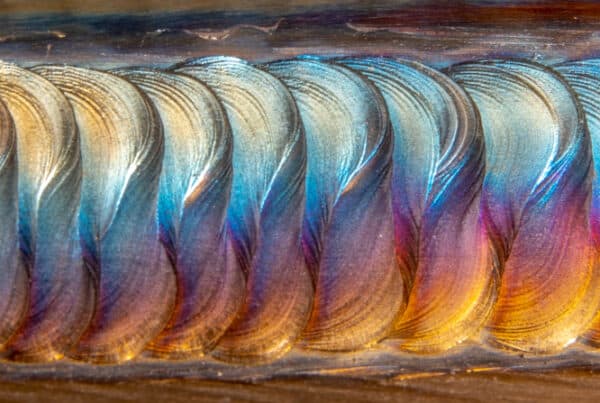
When discussing the challenges in welding, any welder will describe the constant struggle with heat distortion. While some metals exhibit less distortion, metals like stainless steel can be particularly tricky. This distortion not only causes the welded component to have an unpleasant appearance but compromises its structural strength.
While industries have tried many preventive measures to minimize heat distortion, welding with an automated system such as orbital welding seems to provide the most effective option. The programmability and control offered by orbital welding can ensure heat input precision for different materials to ensure the weld doesn’t create any heat distortion or other kinds of flaws.
What Initiates Heat Distortion in Welding?
During heating, metal is subjected to thermal stress from constant expansion and contraction, which may cause heat distortion. The scale of heat distortion can vary in materials based on their thermal properties. Heat generates from the electric arc during welding, which causes the metal to heat up and expand. However, this heat usually is localized near the point of contact. This can cause uneven expansion and contraction and lead to distortion. While connecting dissimilar metals, the uneven thermal coefficient of metals can lead to irregular expansion that can cause distortion during welding.
Known Practices to Minimize Heat Distortion in Welding
Welders may cite experience as the most important factor in reducing heat distortion during welding. After all, welding different materials for several years can help welders identify the strength and weaknesses of the material and determine how potential problems can be resolved or reduced. However, there are more technical approaches to minimize distortion:
- Even heating and cooling of metal for uniform expansion and contraction.
- Controlled heat input.
- Correct sizing of the weld to make sure only adequate metal is used in the joint to reduce shrinkage.
- Performing welding with minimal passes to reduce the shrinkage accumulation from each pass.
- Quicker welding to reduce the heat transmission with time around the heat-affected zone and reduce the degree of shrinkage.
- Use of intermittent weld instead of continuous weld when possible.
- Effective weld design and accurate welding schedule ensure precise heat input, the correct number of weld passes, and weld head positioning.
Achieving these distortion reduction parameters with manual welding can be challenging. To effectively minimize heat distortion, manufacturers have transitioned to welding with automated systems like orbital welding.
Orbital Welding Offers Quality and Speed to Minimize Heat Distortion in Welding
Orbital welding is trusted for its ability to produce precise, pure, and high-quality welds. The weld parameter control and optimization that orbital welding enables can be especially beneficial in reducing welding issues like heat distortion. This can be supported by the advanced auto weld heads and controllers, as well as online or offline programmability, to provide the following advantages:
- Parameters like arc length, voltage, travel speed and wire feed speed directly affect the heat exposure of the metal and influence the distortion of the metal. Automated orbital welding enables controlled input of these parameters to reduce the material’s heat exposure to minimize distortion.
- With the help of a remote weld pendant, operators can more easily monitor the welding process. Optimization of any setting mid-weld is possible should unanticipated welding issues arise that may lead to distortion.
- Weld planning is an essential part of the welding process when increased productivity is the goal. Modern programming software compatible with orbital welding enables weld scheduling to improve the weld quality. Distortion is common when the schedule is off by even a small margin. With programmability, operators can easily calibrate the controller to ensure proper speed and feed rate. This high degree of control enables precision in welding while reducing issues like heat distortion.
Leveraging Automation and Orbital Welding to Minimize Heat Distortion
Implementing orbital welding as the primary process benefits industries by ensuring weld parameter control. Furthermore, this automation also makes the orbital welding process highly repeatable and consistent. Once a standard weld procedure is identified, orbital welding can conduct a controlled weld process to produce a precise result in every run. With precision, welders and manufacturers can keep heat distortion to a minimum each time while improving productivity and quality.
Arc Machines, Inc. helps you create a high-quality weld with its advanced welding equipment. Our orbital welding technology provides excellent control to ensure accurate heat input during welding to minimize heat distortion. Welding schedule programming is also supported by our orbital welding technology for enhanced safety, precision, and productivity. For inquiries regarding products, contact sales@arcmachines.com. Arc Machines welcomes the opportunity to discuss your specific needs. Contact us to arrange a meeting.




